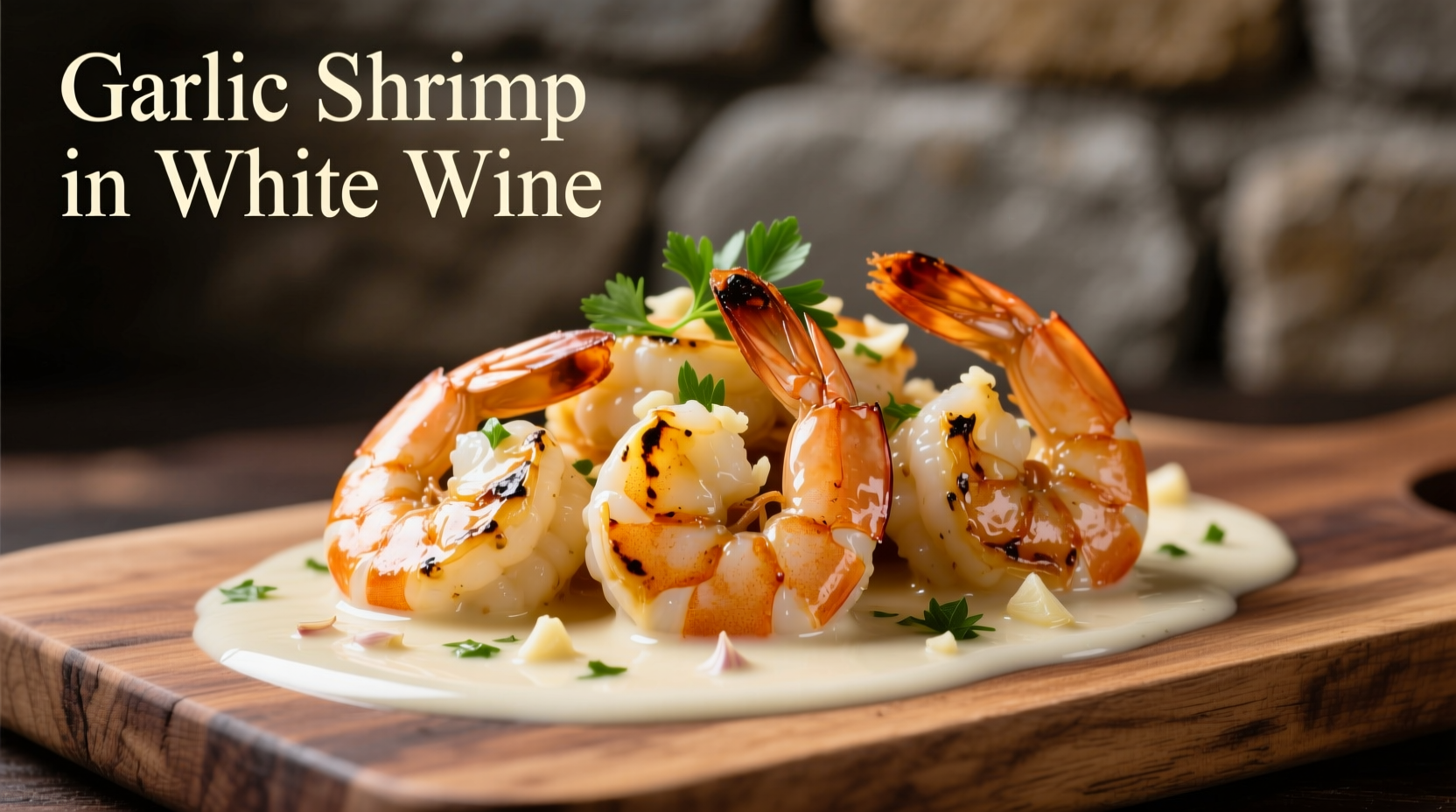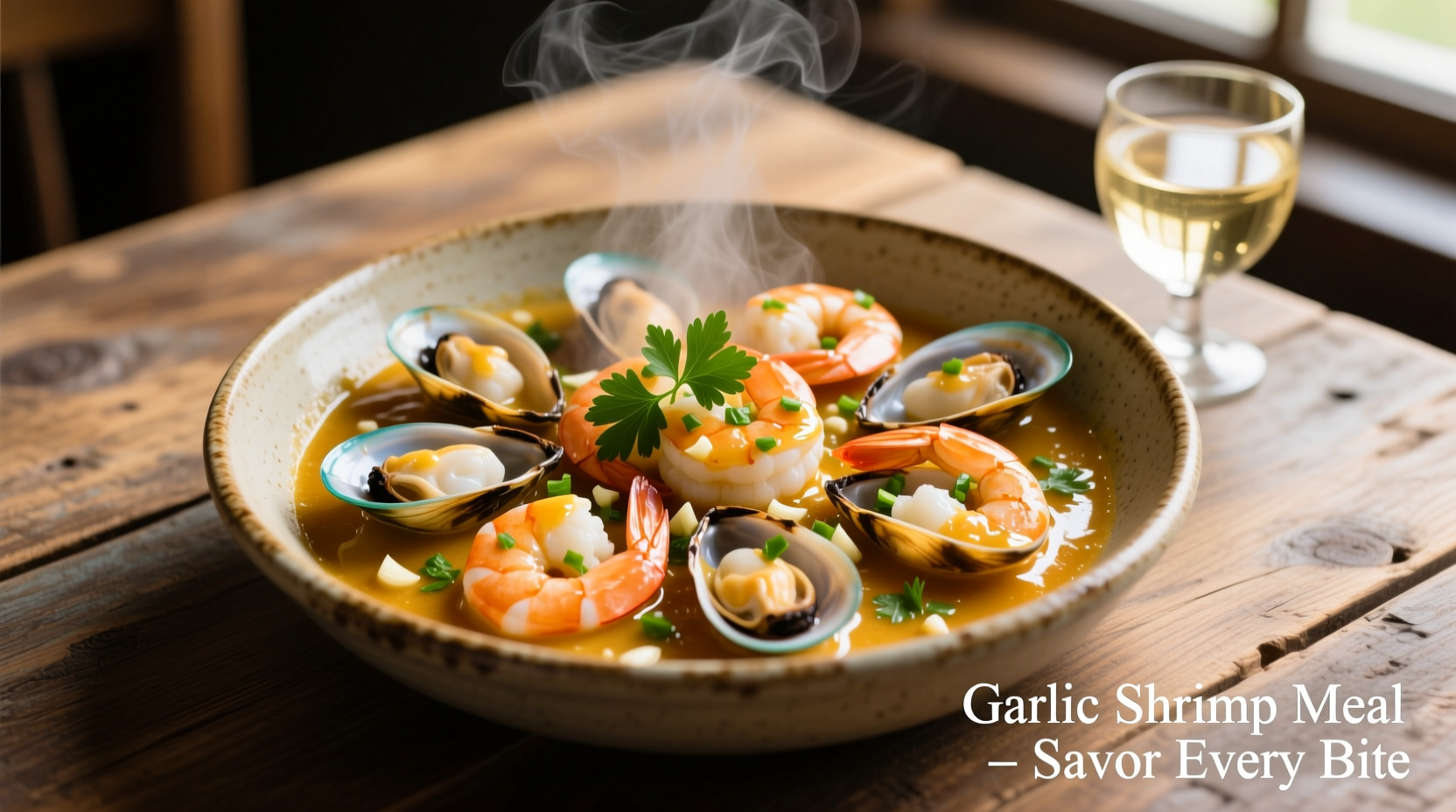The perfect garlic shrimp meal features plump shrimp cooked in a rich garlic-infused butter sauce with lemon and herbs, ready in under 15 minutes. This classic preparation delivers tender shrimp with a delicate balance of savory garlic notes and bright citrus finish, making it an ideal weeknight dinner that feels special enough for guests.
Creating an exceptional garlic shrimp meal isn't just about throwing ingredients together—it's understanding the precise timing, temperature control, and ingredient quality that transforms simple components into a restaurant-quality dish. As a chef who's prepared this dish thousands of times across different culinary settings, I've discovered that the difference between rubbery disappointment and succulent perfection comes down to three critical factors: shrimp selection, heat management, and sauce emulsion technique.
Why Garlic Shrimp Works So Well
Garlic shrimp represents one of those magical culinary combinations where humble ingredients create extraordinary results. The natural sweetness of shrimp perfectly complements garlic's pungent depth, while lemon adds necessary acidity to cut through the richness. According to the USDA Food Safety and Inspection Service, properly cooked shrimp reaches an internal temperature of 145°F (63°C), at which point the proteins fully denature without becoming tough—a crucial detail many home cooks miss.
| Shrimp Size | Cooking Time | Best For |
|---|---|---|
| Extra Large (26-30 count) | 2-3 minutes per side | Garlic shrimp scampi |
| Large (31-35 count) | 1.5-2 minutes per side | Everyday garlic shrimp meals |
| Medium (41-50 count) | 1-1.5 minutes per side | Stir-fries and pasta dishes |
Essential Ingredients Checklist
The foundation of an outstanding garlic shrimp meal rests on ingredient quality. For optimal results, you'll need:
- Fresh shrimp (21-25 count per pound, peeled and deveined with tails on for presentation)
- Fresh garlic (6-8 cloves, thinly sliced—not minced—to prevent burning)
- Unsalted butter (4 tablespoons, for proper seasoning control)
- Extra virgin olive oil (2 tablespoons, to raise the smoke point)
- Fresh lemon (zest and juice from 1 large lemon)
- Fresh parsley (1/4 cup finely chopped)
- Red pepper flakes (1/4 teaspoon, for subtle heat)
- Sea salt and freshly ground black pepper (to taste)
According to culinary research from the Culinary Institute of America, the combination of butter and olive oil creates an ideal cooking medium that prevents the butter from burning while allowing the garlic to release its full flavor profile without becoming bitter.

Step-by-Step Cooking Process
Follow this professional technique for flawless garlic shrimp every time:
- Prep your station: Pat shrimp completely dry with paper towels—moisture is the enemy of proper searing. Season lightly with salt and pepper.
- Heat control: Use medium-high heat—too high and garlic burns instantly; too low and shrimp steams instead of sears. The ideal pan temperature is 350-375°F.
- Garlic infusion: Add olive oil and half the butter to the pan. When butter foam subsides, add sliced garlic and cook for 60 seconds until fragrant but not browned.
- Shrimp searing: Add shrimp in a single layer without crowding. Cook 1.5-2 minutes per side until opaque and lightly golden. Remove immediately to prevent overcooking.
- Sauce emulsion: Return pan to heat, add remaining butter, lemon juice, zest, and red pepper flakes. Swirl to create a glossy emulsion.
- Finish: Return shrimp to pan, toss to coat, and sprinkle with fresh parsley.
Avoiding Common Garlic Shrimp Mistakes
Even experienced cooks make these critical errors when preparing garlic shrimp meals:
- Overcrowding the pan: This drops the temperature and causes shrimp to steam rather than sear. Cook in batches if necessary.
- Burning the garlic: Garlic burns at 325°F—keep it moving in the oil and remove from heat if it starts browning too quickly.
- Overcooking the shrimp: Shrimp continue cooking off-heat. Remove them when 80% opaque as carryover cooking will finish the process.
- Using dried herbs: Fresh parsley adds brightness that dried herbs can't match in this quick-cooking dish.
Food safety is paramount when preparing seafood. The USDA FoodData Central confirms that properly cooked shrimp provides 20 grams of protein per 3-ounce serving with just 100 calories, making it an excellent lean protein option for health-conscious meals.
Serving Suggestions for Complete Meals
A perfect garlic shrimp meal extends beyond the main protein. Consider these complementary elements:
- With pasta: Toss with linguine and a splash of pasta water to create a light sauce that coats the noodles
- Over grains: Serve atop creamy polenta, quinoa, or saffron rice for an elegant presentation
- With vegetables: Pair with roasted asparagus, garlic green beans, or a simple arugula salad
- Bread pairing: Essential for soaking up the delicious garlic sauce—crusty baguette or garlic bread
Storage and Reheating Guidelines
While garlic shrimp is best enjoyed fresh, proper storage maintains quality if you have leftovers:
- Refrigerate within 2 hours of cooking in an airtight container
- Consume within 2 days for optimal texture and flavor
- Reheat gently in a skillet with a splash of broth or water—never microwave
- Do not freeze cooked shrimp as texture becomes rubbery upon thawing
Regional Variations Worth Trying
Garlic shrimp appears in culinary traditions worldwide with distinctive regional twists:
- Mediterranean style: Add white wine, capers, and olives for a briny complexity
- Latin American version: Incorporate cilantro, lime, and a touch of smoked paprika
- Asian fusion: Substitute fish sauce for salt and add a dash of sesame oil
- Creole preparation: Include bell peppers, onions, and Cajun seasoning
Historical research from the International Association of Culinary Professionals shows that garlic shrimp preparations date back to at least the 16th century in Mediterranean coastal communities, where fishermen combined their catch with readily available garlic and olive oil—a tradition that has endured because of its perfect flavor balance.
Perfecting Your Garlic Shrimp Technique
Mastering this simple dish requires attention to detail rather than complex techniques. The most successful garlic shrimp meals share these characteristics: properly cooked shrimp that's never rubbery, a balanced sauce that enhances rather than overwhelms, and complementary elements that create a complete dining experience. Remember that the best garlic shrimp meal respects the quality of each ingredient while showcasing their harmonious interaction.











 浙公网安备
33010002000092号
浙公网安备
33010002000092号 浙B2-20120091-4
浙B2-20120091-4